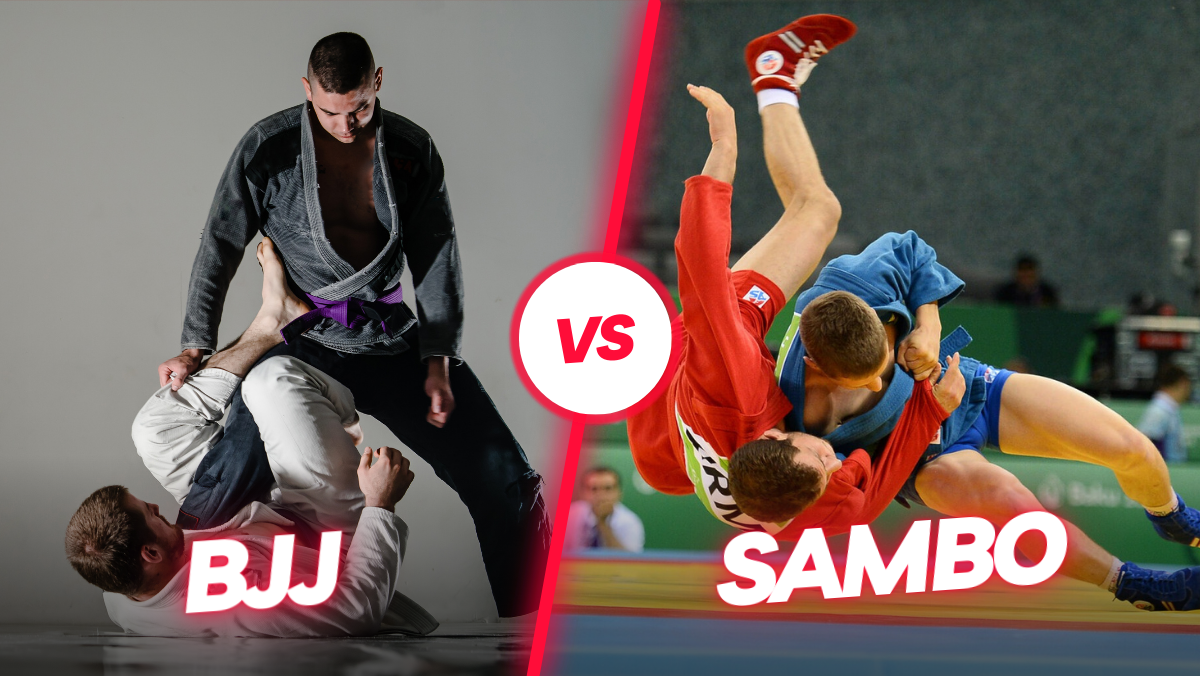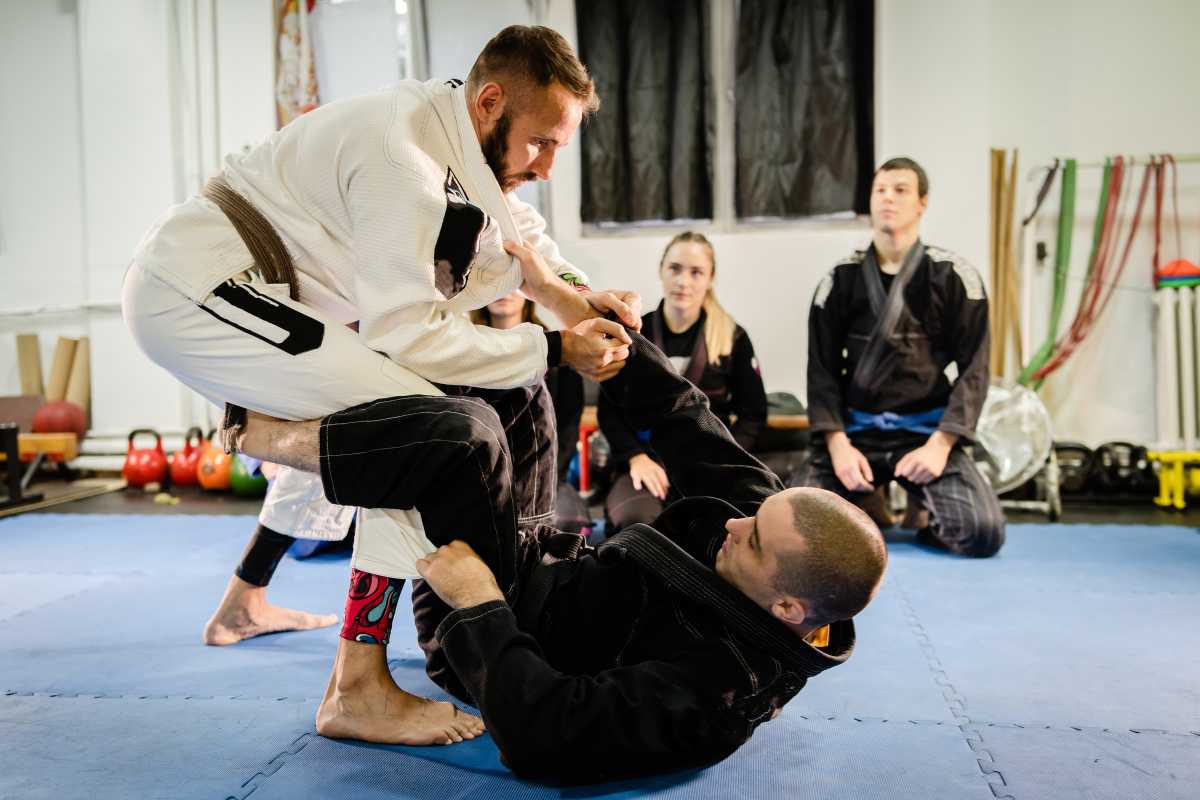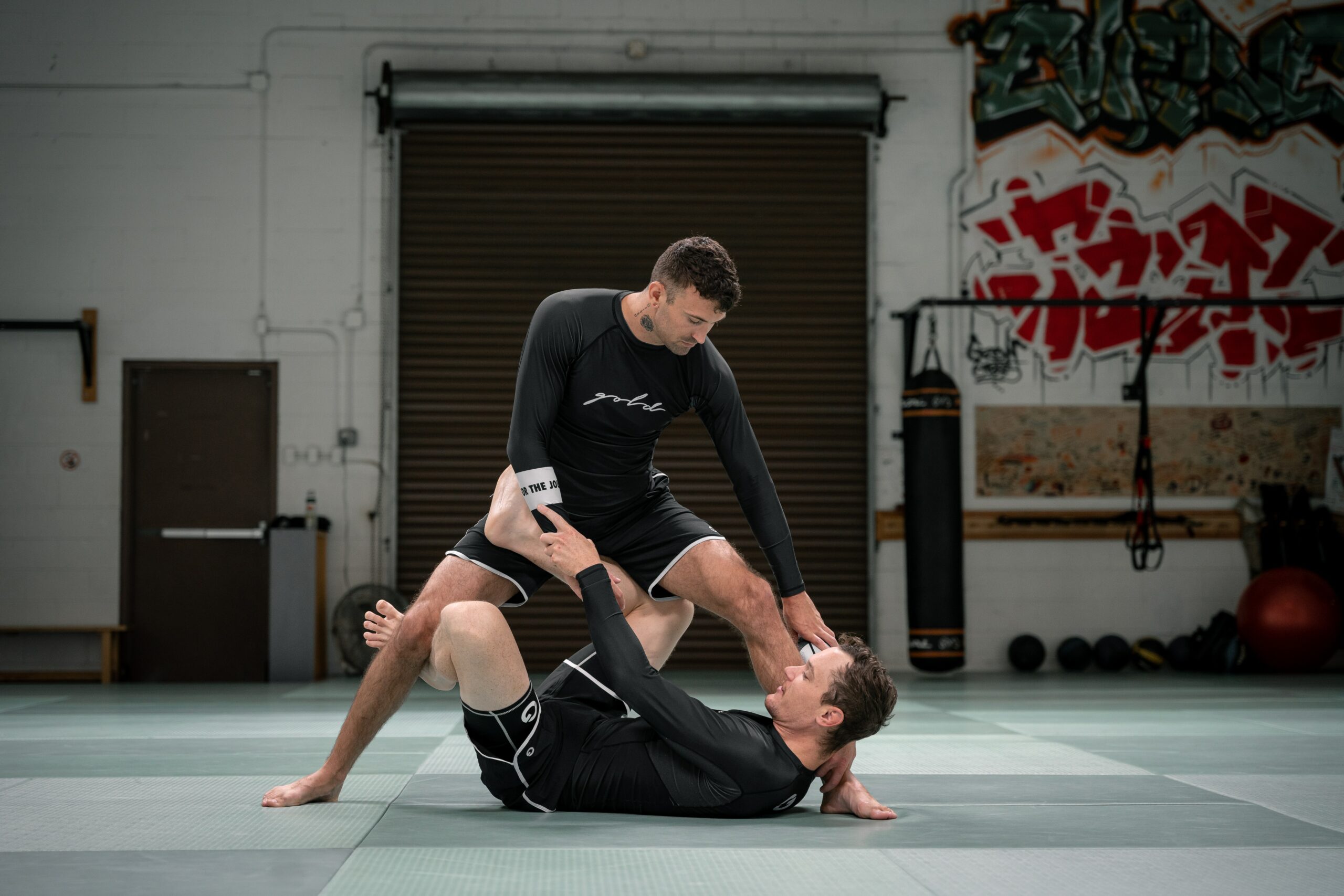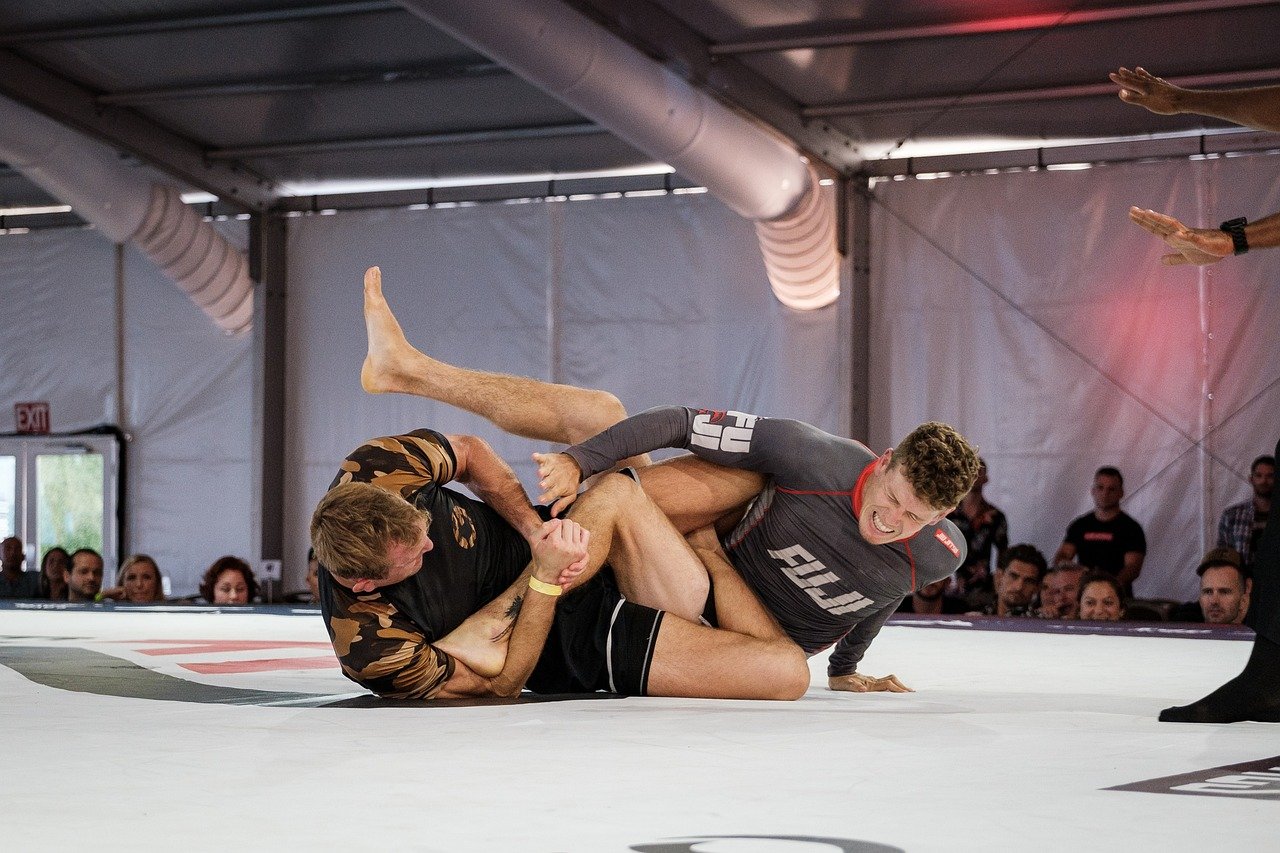
If you are interested in martial arts, you have probably heard of Brazilian Jiu-Jitsu (BJJ) and Sambo.
Both are grappling arts that have become increasingly popular in recent years.
While they share similarities, they also have significant differences in their techniques, strategies, and rules.
In this article, we will explore the differences between BJJ vs Sambo and help you decide which one is better suited to your goals.
Key Takeaways
- BJJ and Sambo are both grappling arts with different techniques and strategies.
- BJJ focuses on ground fighting and submissions, while Sambo incorporates throws and takedowns.
- The choice between BJJ and Sambo depends on your goals and preferences.
Origins and History
When it comes to the origins and history of Brazilian Jiu-Jitsu (BJJ) and Sambo, both martial arts have unique and interesting stories to tell.
Bjj Origins

BJJ was developed by the Gracie family in Brazil in the early 20th century.
The Gracies were a family of martial artists who were fascinated by the techniques of Judo and other grappling arts.
They began to experiment with these techniques and developed their own unique style of grappling, which they called Brazilian Jiu-Jitsu.
BJJ quickly gained popularity in Brazil and eventually spread around the world.
Today, it is one of the most popular martial arts in the world, with millions of practitioners.
Sambo Origins

Sambo, on the other hand, was developed in the Soviet Union in the early 1920s.
It was created as a system of self-defense for the Soviet military and was designed to be effective in both hand-to-hand combat and against armed opponents.
Sambo is a combination of various grappling arts, including Judo, Jiu-Jitsu, and traditional Russian wrestling.
It also includes elements of striking, making it a well-rounded martial art.
Sambo gained popularity in the Soviet Union and eventually spread to other parts of the world.
Today, it is practiced in many countries and is recognized as an Olympic sport.
Techniques and Strategies
Bjj Techniques
BJJ is known for its ground fighting techniques, which involve grappling and submission holds.
The main objective of BJJ is to take down your opponent and submit them using joint locks or chokes.
Some of the most common BJJ techniques include:
- Guard: The guard is a position where you are on your back and using your legs to control your opponent’s body. There are many variations of the guard, including closed guard, open guard, and half guard.
- Mount: The mount is a dominant position where you are sitting on top of your opponent. From this position, you can strike your opponent or go for a submission hold.
- Side Control: Side control is a position where you are lying on top of your opponent, with your chest on their chest. From this position, you can control your opponent’s movements and go for a submission hold.
Sambo Techniques
Sambo is a hybrid martial art that combines elements of judo, wrestling, and striking.
Sambo techniques are designed to be effective in both standing and ground fighting situations.
Some of the most common Sambo techniques include:
- Throws: Sambo practitioners are known for their throwing techniques, which involve using your opponent’s momentum to take them down to the ground.
- Leg Locks: Sambo allows for a wider range of leg locks than BJJ, including knee bars and heel hooks.
- Striking: Sambo also incorporates striking techniques, including punches, kicks, and knee strikes. These techniques are used to create openings for throws and submission holds.
Rules and Competitions
Bjj Rules
Brazilian Jiu Jitsu competitions are typically divided into weight classes and skill levels.
Matches are won by submission, points, or referee decision.
The rules for BJJ competitions vary depending on the organization, but generally include the following:
- No striking or kicking
- No biting or eye gouging
- No slamming (picking up your opponent and throwing them down)
- No twisting leg locks or heel hooks (in some competitions)
- No slamming your opponent’s head into the ground
BJJ matches are typically won by submission, which means forcing your opponent to tap out by applying a joint lock or chokehold.
Points are also awarded for takedowns, sweeps, and dominant positions. Referees may also award points for near-submissions or submission attempts.
Sambo Rules
Sambo competitions are divided into weight classes and skill levels, similar to BJJ.
Matches are won by submission, points, or referee decision.
The rules for Sambo competitions vary depending on the organization, but generally include the following:
- No striking or kicking
- No biting or eye gouging
- No slamming (picking up your opponent and throwing them down)
- Leg locks and arm locks are allowed, but neck cranks and twisting leg locks are not allowed in some competitions
- Chokes are allowed in some competitions
Sambo matches are typically won by submission, but points are also awarded for throws, takedowns, and dominant positions.
Referees may also award points for near-submissions or submission attempts.
Training and Conditioning
BJJ Training

BJJ training primarily focuses on ground fighting techniques.
To be successful in BJJ, you need to have a strong core and lower body, as well as good flexibility.
Here are some training tips to improve your BJJ skills:
- Cardiovascular Training: BJJ matches can be long and exhausting, so it’s important to have good cardiovascular endurance. Running, swimming, and cycling are all great ways to improve your endurance.
- Strength Training: Building strength in your core and lower body is crucial for BJJ. Exercises like squats, deadlifts, and planks can help you build a strong foundation.
- Flexibility Training: BJJ requires a lot of flexibility, so stretching is an important part of your training routine. Incorporate stretching exercises like hip openers, hamstring stretches, and shoulder stretches into your routine.
Sambo Training
Sambo is a combat sport that includes striking, grappling, and ground fighting.
To be successful in Sambo, you need to have good overall physical conditioning.
Here are some training tips to improve your Sambo skills:
- Cardiovascular Training: Sambo matches can be intense and fast-paced, so it’s important to have good cardiovascular endurance. Running, jump rope, and high-intensity interval training (HIIT) are all great ways to improve your endurance.
- Strength Training: Building overall strength is important for Sambo. Exercises like squats, deadlifts, and bench press can help you build a strong foundation.
- Explosiveness Training: Sambo requires quick reflexes and explosive movements. Plyometric exercises like box jumps, medicine ball throws, and explosive push-ups can help you develop explosive power.
Both BJJ and Sambo require a lot of physical conditioning and training to be successful.
Incorporating a variety of exercises into your training routine can help you improve your overall fitness and skills in both sports.
Pros and Cons
BJJ Pros and Cons
BJJ is a popular grappling style that has gained immense popularity in the West.
Here are some pros and cons of BJJ that you should consider before choosing it as your martial art:
Pros
- BJJ is highly effective in ground fighting and submission grappling. It teaches you how to control and submit opponents on the ground.
- It is a great workout and helps in building strength, flexibility, and endurance.
- BJJ is a relatively safe martial art to practice since it does not involve striking.
Cons
- BJJ can be difficult to learn and master. It takes a lot of time and effort to become proficient in this martial art.
- There is a risk of injury, especially to the joints, if techniques are not executed correctly.
- BJJ may not be suitable for people who prefer standing martial arts or those who are uncomfortable with close physical contact.
Sambo Pros and Cons

Sambo is a Russian martial art that includes striking, grappling, and ground fighting.
Here are some pros and cons of Sambo that you should consider before choosing it as your martial art:
Pros
- Sambo is a well-rounded martial art that includes both striking and grappling techniques. It is effective in various combat situations.
- It teaches you how to defend against strikes and takedowns, making it a practical self-defense martial art.
- Sambo is a great workout and helps in building strength, endurance, and agility.
Cons
- Sambo can be more physically demanding than BJJ since it involves both striking and grappling.
- It may not be suitable for people who prefer a more traditional martial art since it is a relatively new martial art.
- Sambo may not be as widely available as BJJ, making it difficult to find a good school or instructor.
Bjj vs Sambo: A Comparison
When it comes to grappling martial arts, two of the most popular styles are Brazilian Jiu-Jitsu (BJJ) and Sambo.
Both styles have their unique strengths and weaknes6ses, and it can be difficult to determine which one is better.
In this section, we will compare BJJ and Sambo in terms of their techniques, training methods, and competition formats.
Techniques
BJJ and Sambo have many similarities in terms of their techniques.
Both styles focus heavily on ground fighting and submissions, with a strong emphasis on control and leverage.
However, there are some key differences between the two styles.
BJJ places a greater emphasis on the use of the guard position, which is a defensive position where the practitioner is on their back and using their legs to control their opponent.
Sambo, on the other hand, places more emphasis on throws and takedowns, which can be used to quickly take an opponent to the ground.
Another key difference is in the use of joint locks and chokes.
BJJ allows practitioners to use a wide range of joint locks and chokes, while Sambo only allows arm and leg joint locks in its sport version.
Combat Sambo, however, does allow chokeholds.
Training Methods
Both BJJ and Sambo require a significant amount of training and practice to master.
However, there are some differences in their training methods.
BJJ typically focuses on drilling techniques and sparring with a live opponent, with an emphasis on positional training.
Sambo, on the other hand, places more emphasis on conditioning and physical training, with a focus on throws and takedowns.
Competition Formats
Both BJJ and Sambo have their own unique competition formats.
BJJ competitions typically involve matches where the first person to score a submission or accumulate points wins.
Sambo competitions can involve both sport and combat versions.
Sport Sambo matches involve points being awarded for throws, takedowns, and submissions, while combat Sambo matches are more similar to MMA fights.
Conclusion
Both Brazilian Jiu-Jitsu (BJJ) and Sambo are formidable martial arts with their unique strengths and weaknesses.
When it comes to grappling and ground combat, both arts are highly effective.
However, they differ in their technical emphasis and approach to ground fighting.
BJJ focuses more on submissions and ground control techniques, while Sambo places more emphasis on throws, takedowns, and joint locks.
BJJ practitioners also tend to spend more time training in the gi, while Sambo training is usually done in no-gi attire.
If you are looking for a martial art that emphasizes ground control and submissions, BJJ might be the better choice for you.
On the other hand, if you are interested in throws and takedowns, Sambo might be more suitable.
Ultimately, the best choice depends on your personal preferences, goals, and what you want to achieve with your training.
If you have the opportunity, try both arts and see which one resonates with you the most.




